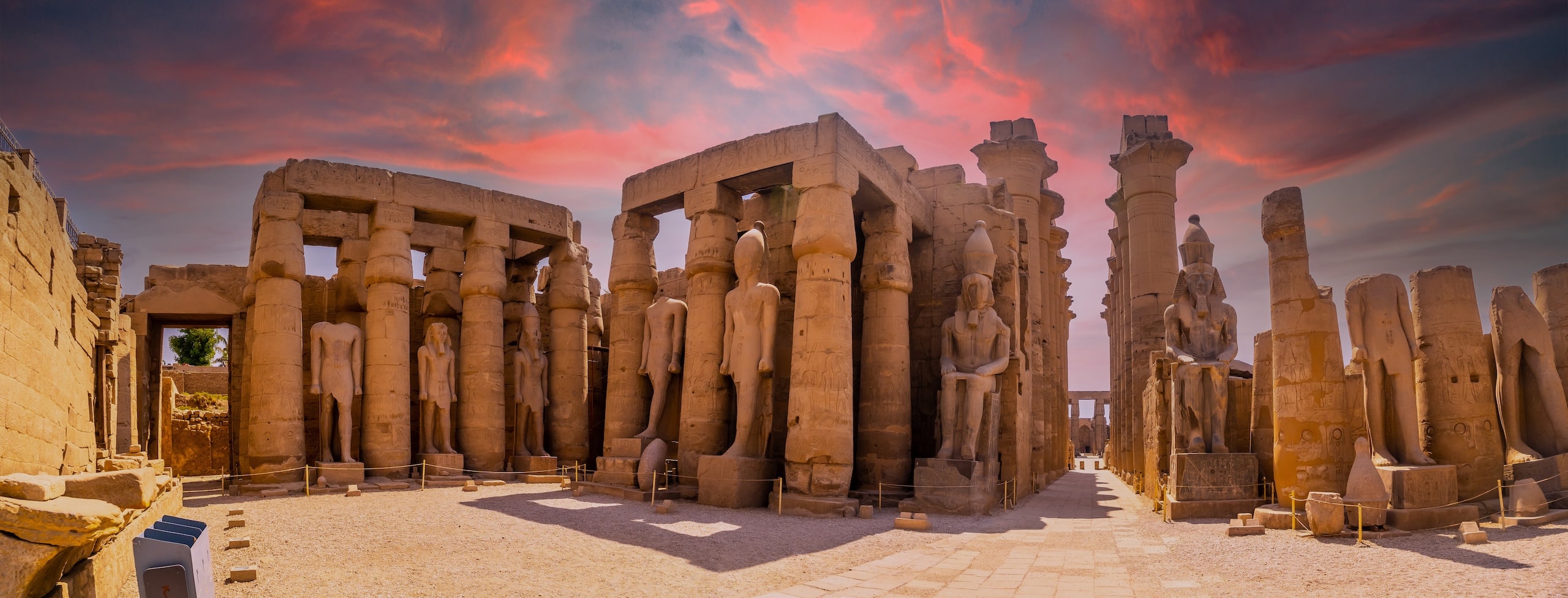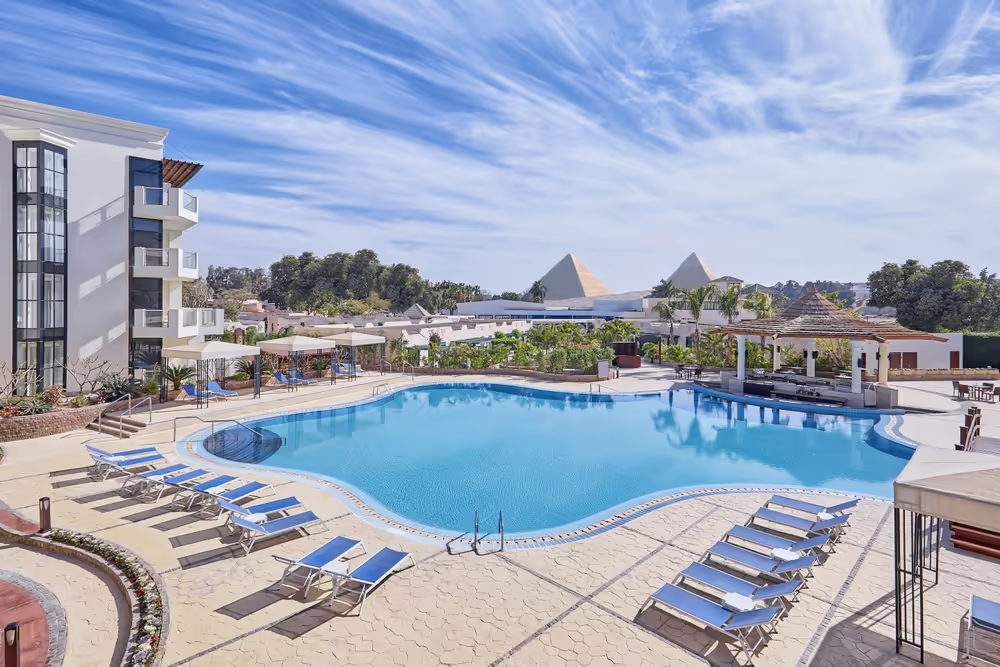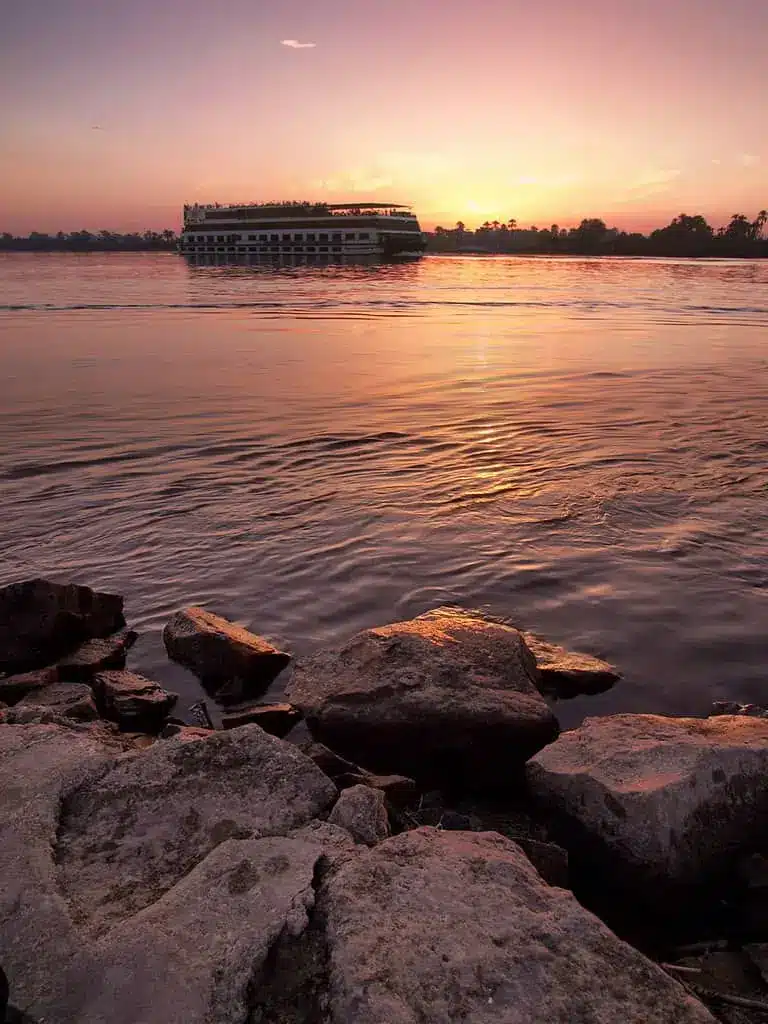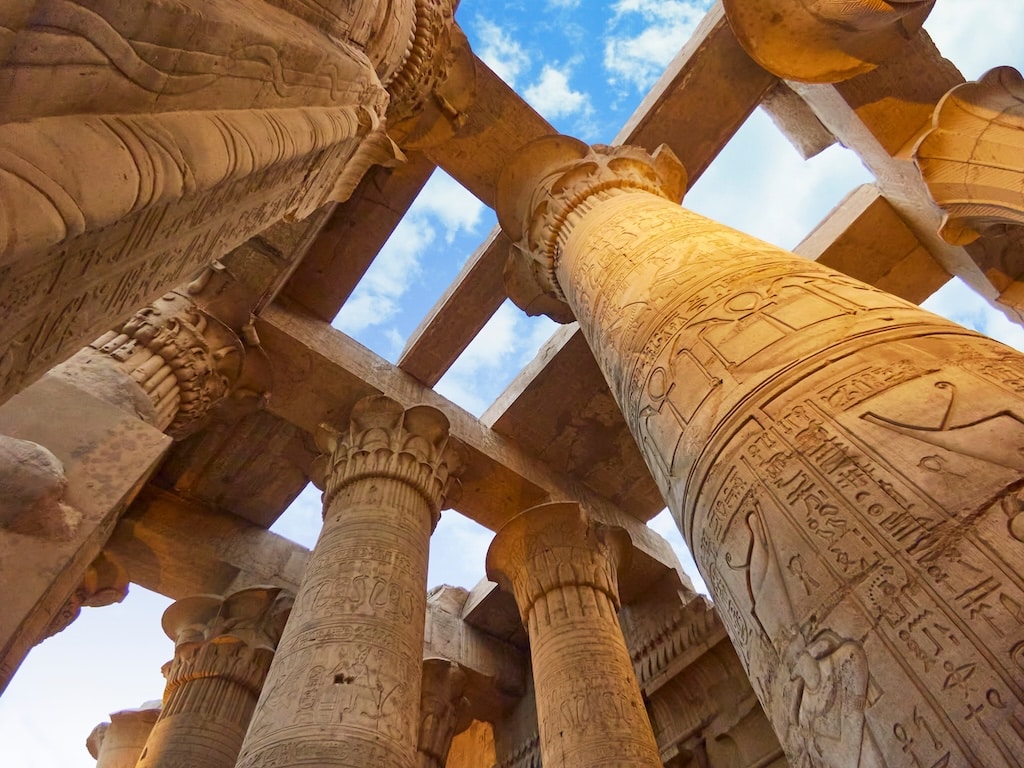Interesting facts about the River Nile
Did you know that the River Nile is not only the longest river in Africa but also the longest river in the world? That’s just one of the many interesting facts about this incredible waterway. Stretching over 4,135 miles, the Nile has played a significant role in the history and development of ancient civilizations. It has been the lifeblood of Egypt, providing rich soil for agriculture and water for sustenance.
But there’s more to the River Nile than its size and historical importance. For instance, did you know that the Nile is home to over 30 species of fish? Or that it flows through 11 different countries? Its waters have been a source of inspiration, awe, and mystery for centuries, captivating travellers and explorers from all walks of life.
In this blog, we will delve into fascinating facts about the River Nile, uncovering its secrets and unravelling its mysteries. From the annual flooding that brings life to the surrounding lands to the unique wildlife that thrives along its banks, join us on a journey along the ancient river that continues to shape the lives of millions of people today.
If you are planning on taking a Nile cruise, you are bound to have a fantastic time. Egypt is a place with an incredible history, beautiful scenery, and so much to offer. The Nile River epitomises this. Read on to discover some interesting factors about the River Nile…
Geographic and historical significance of the River Nile
The River Nile is a vital geographical feature that has shaped the landscape and culture of northeastern Africa. Originating from two primary tributaries, the White Nile and the Blue Nile, it stretches over 4,135 miles, making it the longest river in the world. The White Nile begins in East Africa, primarily from Lake Victoria, while the Blue Nile flows from Lake Tana in Ethiopia. These two branches converge in Sudan before flowing northward through Egypt and finally emptying into the Mediterranean Sea. This unique geographical path not only defines the physical geography of the region but also influences the climate and ecosystems surrounding it.
Historically, the Nile has served as a crucial artery for transportation and trade. Ancient Egyptians relied heavily on its waters for navigation, moving goods and people along its length. The river facilitated trade between different regions, allowing for the exchange of resources, culture, and ideas. Many ancient settlements and cities, including the famous Luxor and Aswan, flourished along its banks, owing their prosperity to the fertility provided by the annual floods. The predictable inundation of the Nile created a farming calendar that allowed agriculture to thrive, which was vital for sustaining the growing population of ancient Egypt.
The Nile also holds immense cultural significance and is often regarded as a lifeline for the civilizations that developed along its banks. The river is deeply intertwined with Egyptian mythology and religion, being personified in various deities. Its annual flooding was seen as a gift from the gods, ensuring a bountiful harvest. The historical significance of the Nile cannot be understated; it is a symbol of life and sustenance, making it an integral part of the identity of the Egyptian people and their heritage.
Interesting facts about the length and size of the River Nile
While the River Nile is widely recognized as the longest river on the planet, its impressive length is just one aspect of its grandeur. The river flows through eleven countries: Uganda, Sudan, Egypt, Kenya, Tanzania, Rwanda, Burundi, Ethiopia, Congo, South Sudan, and Zambia. This extensive reach showcases the Nile’s importance as a shared resource among multiple nations. Its basin covers approximately 1,293,000 square kilometres, accounting for about 10% of the African continent. Such a vast area highlights the river’s influence on regional climates, biodiversity, and human activities.
The Nile’s size is not only measured in length but also in its volume and flow. The river’s average discharge is around 2,830 cubic meters per second, making it a significant source of freshwater for the surrounding regions. This flow varies seasonally, with higher discharges occurring during the rainy season in the Ethiopian highlands, which feeds the Blue Nile. The river’s periodic flooding has historically replenished the soil, enriching it with nutrients, making it ideal for agriculture. This natural cycle is a testament to the river’s role in sustaining life and promoting agricultural practices in ancient and modern times.
Interestingly, the River Nile is also home to a unique phenomenon known as the “Nile Delta.” This delta region, where the river spreads out and drains into the Mediterranean Sea, is one of the largest deltas in the world. It has a rich and diverse ecosystem, supporting numerous species of flora and fauna. The delta’s fertile lands have been cultivated for millennia, making it a crucial agricultural area. The size and complexity of the Nile and its delta continue to be a subject of study for scientists and environmentalists as they seek to understand the intricate relationships between the river, its ecosystem, and human activity.
The role of the River Nile in ancient Egyptian civilization
The River Nile was the cornerstone of ancient Egyptian civilization, serving as the primary source of water, food, and transportation. Its annual floods brought rich silt and nutrients to the surrounding land, creating some of the most fertile agricultural regions in the world. This allowed the ancient Egyptians to grow an abundance of crops, including wheat, barley, flax, and various fruits and vegetables. The agricultural surplus supported a growing population and enabled the development of complex societal structures, ultimately leading to the rise of one of the world’s greatest civilizations.
In addition to its agricultural significance, the Nile was a vital transportation route. The river provided a means for the ancient Egyptians to travel and trade with neighbouring regions, fostering economic growth and cultural exchange. Boats made from papyrus reeds were commonly used to navigate the river, allowing for the movement of goods such as grain, stone, and crafts. The Nile connected Upper and Lower Egypt, facilitating the unification of the two regions under a single rule, which was essential for the formation of a centralized state.
Moreover, the Nile held deep spiritual and religious significance for the ancient Egyptians. It was revered as a divine gift, with numerous deities associated with its waters. The goddess Hapi, for example, was worshipped as the personification of the Nile and was believed to control the fertility of the land and the abundance of crops. The river was often depicted in Egyptian art and literature, symbolizing life, renewal, and prosperity. Temples and monuments were constructed along its banks, further emphasizing the integral role the Nile played in the religious and cultural practices of ancient Egypt.
Unique wildlife and biodiversity along the River Nile
The River Nile is not only a lifeline for human civilization but also a rich habitat for various species of wildlife. Its diverse ecosystems support over 30 species of fish, including the famous Nile perch, catfish, and tilapia. These fish species are vital for the local fishing communities and contribute to the diets of millions of people living along the river. The Nile’s waters also host a variety of aquatic plants, which provide shelter and breeding grounds for many fish and other aquatic organisms.
In addition to fish, the riverbanks are home to an array of terrestrial wildlife. The wetlands and marshes surrounding the Nile serve as critical habitats for birds, reptiles, and mammals. Migratory bird species, such as herons, pelicans, and storks, flock to the area, taking advantage of the abundant food supply. The lush vegetation along the banks provides nesting sites and protection from predators. Moreover, the Nile is home to iconic animals such as the Nile crocodile and various species of turtles, which play essential roles in maintaining the ecological balance of the river’s ecosystem.
The biodiversity of the River Nile has made it a focal point for conservation efforts. Organizations and governments are working to protect the unique habitats and species that rely on the river. However, these efforts face challenges due to pollution, habitat destruction, and climate change. The introduction of invasive species, such as the water hyacinth, has also posed a threat to the native flora and fauna. Understanding and addressing these challenges is crucial for preserving the river’s rich biodiversity for future generations.
The cultural and economic importance of the River Nile
The River Nile’s cultural and economic significance extends beyond its role in agriculture and transportation. It has been a source of inspiration for countless artists, writers, and musicians throughout history. The river has been depicted in numerous works of art, literature, and film, symbolizing beauty, mystery, and life. Festivals and celebrations often centre around the river, reflecting its importance in the social lives of the people living along its banks. The Nile continues to be a source of pride for Egyptians and serves as a reminder of their rich heritage and historical legacy.
Economically, the Nile remains a crucial resource for the countries it flows through. It supports various industries, including agriculture, fishing, and tourism. The fertile lands along the river are essential for food production, ensuring the sustenance of local communities. Fishing is another economic activity that provides livelihoods for many families. The river’s waters are teeming with fish, making it a vital source of protein for the population.
Tourism along the Nile has also flourished, with visitors flocking to see its historical landmarks and natural beauty. The river offers breathtaking views and opportunities for activities such as river cruises, fishing, and wildlife watching. Iconic sites like the Pyramids of Giza, the temples of Karnak, and the Valley of the Kings attract millions of tourists each year, contributing significantly to the economy. As tourism continues to grow, it is essential to balance development and environmental conservation to ensure the long-term sustainability of the Nile and its surrounding ecosystems.
Famous landmarks and attractions along the River Nile
The River Nile is dotted with numerous landmarks and attractions that reflect its rich history and cultural significance. One of the most iconic sites is the Pyramids of Giza, located on the outskirts of Cairo. These ancient structures, built as tombs for pharaohs, are among the Seven Wonders of the Ancient World and continue to captivate visitors with their grandeur and mystery. The proximity of the pyramids to the Nile further emphasizes the river’s importance as a lifeline for the ancient Egyptian civilization.
Another remarkable attraction is the city of Luxor, often referred to as the “world’s greatest open-air museum.” Luxor is home to a wealth of archaeological treasures, including the Karnak Temple complex and the Valley of the Kings, where many pharaohs were buried. The Nile’s waters have played a significant role in the preservation of these sites, as they provided the necessary resources for the construction and maintenance of these monumental structures. Tourists can take leisurely cruises along the river, enjoying breathtaking views of the temples and tombs that line its banks.
Aswan, located further south along the Nile, is another popular destination known for its stunning landscapes and historical significance. The Aswan High Dam, completed in the 1970s, is a marvel of modern engineering that transformed the region’s agricultural landscape. It created Lake Nasser, one of the largest artificial lakes in the world, which has become a crucial reservoir for water management and irrigation. The Nubian culture in Aswan also attracts visitors, offering a glimpse into the rich traditions and history of the local people. The combination of ancient history and modern development makes the Nile a fascinating destination for travellers seeking to explore its many wonders.
Modern challenges and conservation efforts for the River Nile
Despite its historical significance and ecological importance, the River Nile faces numerous modern challenges. One of the primary concerns is water scarcity, exacerbated by climate change and population growth.
Conservation organisations are actively working to preserve the Nile’s biodiversity and natural habitats. Initiatives include the establishment of protected areas, reforestation projects, and community awareness programs aimed at promoting sustainable practices. Engaging local communities in conservation efforts is crucial, as they are often the first line of defence in protecting the river’s resources. By fostering a sense of stewardship and responsibility, these initiatives can help ensure the long-term survival of the River Nile and its surrounding ecosystems.
Fascinating myths and legends surrounding the River Nile
Throughout history, the River Nile has inspired countless myths and legends deeply rooted in the cultures of the people living along its banks. In ancient Egyptian mythology, the Nile was personified by the god Hapi, who was believed to bring fertility and abundance. Hapi was often depicted as a plump man with a large belly, symbolizing the richness of the land and the life-giving waters of the river. Many myths surrounding Hapi emphasized the importance of the annual flooding of the Nile, which was seen as a divine blessing that ensured prosperity and sustenance for the people.
Another fascinating legend involves the goddess Isis, who was associated with the Nile and its life-giving properties. According to the myth, Isis searched tirelessly for the body of her husband Osiris, who had been killed by his brother Set. It is said that she used the waters of the Nile to revive Osiris, demonstrating the river’s power to bring life and renewal. This story reflects the deep spiritual connection that the ancient Egyptians had with the Nile, viewing it not only as a physical resource but also as a sacred entity intertwined with their beliefs and practices.
The Nile is also prominently featured in various local folktales and stories passed down through generations. These tales often revolve around the river’s role in shaping the lives of the people, their struggles, and their triumphs. The river is depicted as both a source of life and a force of nature that can bring destruction during times of flooding. These narratives not only highlight the importance of the Nile in daily life but also serve as a reminder of the people’s resilience and adaptability in the face of challenges posed by the environment.
The Ancient Egyptian god of the Nile
Did you know that Hapi was the god of the Nile in Ancient Egypt? Hapi was known by many different names and titles, including Lord of the Fishes and Lord of the River Bringing Vegetation. As you may have gathered by these names, he was honoured for the yearly floods, which brought the land great fertility. He was frequently depicted as an intersex individual with breasts and a large stomach, with a ceremonial false beard and dressed in a loincloth.
Ancient Egypt
The River Nile plays a crucial role in Ancient Egyptian history, which you are bound to hear plenty about throughout your trip. The Nile helped with the construction of the famous pyramids. This is because the blocks of stone were transported by boat for use in the construction. The Nile was also vital for Ancient Egyptian civilisation because it provided transportation, trade, food, and drinking water. Not only this, but it supplied rich soil, which was great for growing crops.
The origins
Last but not least, what about the origins of the name Nile? Well, these are disputed. Some people think that the true origin is ‘neilos’ – this is the Greek word for valley. A lot of other people think it comes from ‘Nahal’, which is the Semitic word for river.
Conclusion: The enduring legacy of the River Nile
The River Nile is much more than just a geographical feature; it is a symbol of life, culture, and history that continues to shape the lives of millions. Its significance extends beyond its physical attributes, encompassing the rich tapestry of stories, myths, and traditions that have developed over millennia. The river’s role in sustaining ancient civilizations laid the foundation for the vibrant cultures that exist today, making it an enduring legacy that resonates through time.
As we navigate the challenges of the modern world, the Nile remains a vital resource that demands our attention and care. The need for sustainable management and conservation efforts has never been more critical, as the river faces threats from pollution, climate change, and geopolitical tensions. By working collaboratively across borders and engaging local communities, we can ensure that the River Nile continues to thrive for generations to come.
Ultimately, the River Nile stands as a testament to the resilience of nature and the enduring spirit of the people who call its banks home. It serves as a reminder of the interconnectedness of all life and the importance of preserving our natural resources. As we reflect on the fascinating facts and stories surrounding this magnificent river, we are reminded of our responsibility to protect and honour the legacy of the Nile, ensuring that it remains a source of inspiration and sustenance for future generations.
If you’d like to learn more about the River Nile and Ancient Egypt, take a look at our selection of River Nile cruises today.
River nile by motazabdelazeem صور من السودان licensed under Creative commons 4







